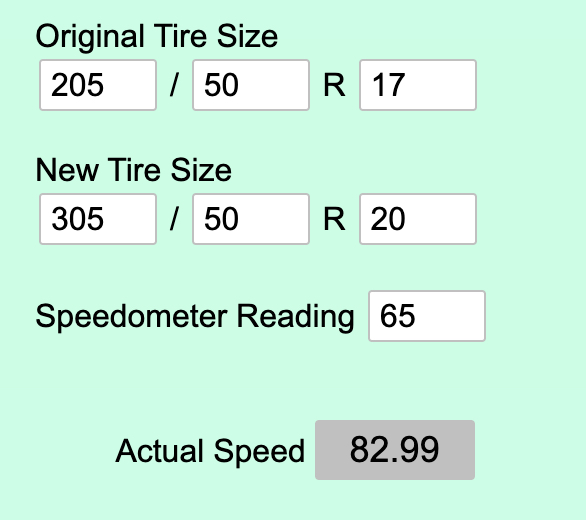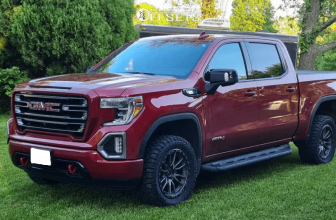Every vehicle is equipped from the factory with a speedometer, which is designed to a specific wheel size it runs. It means that if you change your regular tire size to a bigger one, the rotation time will be increased, so the speedometer shows you a lower speed.
However, if you readjust the speedometer to fit the changed tire size, your speedometer readings will be fine.

What Are the Pros of Bigger Tires?
Significantly increased ground clearance – one of the undoubtful benefits of bigger tires. It allows you to pass through various road obstacles, climb hills, also adding confidence on ruts so you don’t have to worry about getting stuck.
Larger tire size is a good way to make your SUV or truck look more muscular and aggressive.
With a lift kit installed your vehicle will obtain a unique outlook with off road capabilities.
What Are the Cons of Bigger Tires?
If you want to install larger tires, sometimes you have to perform extra changes to your vehicle which may include:
- Fenders extension;
- Suspension strengthening;
- Leveling or lifting kits installation;
- Tire pressure sensors re-alignment;
- Anti-lock brake system re-configuration;
- Speedometer and odometer re-adjustment.
All mentioned measures may cost you a fortune, so if you desire to install larger tires just to make your SUV or pickup truck look more aggressive rather than using it off-road, it may not be worth the money spent.
Moreover bigger tires significantly influence the level of ride quality and comfort, worsen handling, increase fuel consumption and maintenance costs.
How Do Larger Tires Affect Speedometer Accuracy?
When you are cruising down the road and see a road sign with the limitation you are certainly looking at your dashboard speedometer to check if you need to lower your vehicle’s speed.
So how does the vehicle’s speedometer work? With the help of the specific sensor which tracks the amount of rotations made by the tire the number of rotations is sent to ECU which calculates speed and shows the information on a display.
Thus, if you mount bigger tires, your speedometer reading may show the wrong speed. To fix this issue you may have to visit your local mechanic or car service shop to make necessary changes, however adjustment of the speedometer may be costly.
Alternatively, you may get yourself a speedometer calibrator and make the adjustments by yourself. Follow the instructions in the video below to correct your vehicle’s speedometer readings. Just program and then unplug!
Do Larger Tires Put a Strain on the Car’s Transmission?
Your vehicle has a certain amount of torque which is transferred by the engine to transmission to rotate wheels. Bigger tires require increased torque to spin them.
It means that you may need to make some modifications to your vehicle’s transmission, otherwise you may face overheating or inside damage.
To reduce strain on your car’s transmission you can resort to an experienced car mechanic, who will select the best gear ratio for you to run bigger tires without any worries.
How to Determine If I Need a Bigger Tire Size on my Vehicle?
In the USA a lot of SUV and pickup truck enthusiasts are crazy about larger tires upgrades.
Aside from tires, they use special level or lifting kits to make their vehicles look more powerful and unique. Larger tires increase ground clearance which is good for off-roading or passing through road obstacles without damaging the vehicle`s bottom.
Some car drivers, especially those who own sporty ones, mount bigger tires to obtain better driving experience. Additionally such an upgrade improves grip and stability alongside cornering passability.
Summary
Larger tires certainly affect your vehicle’s speedometer, resulting in different readings of the actual speed. To fix it you may have to visit your car mechanic or car service shop to make all the necessary adjustments of your speedometer to fit the diameter of your tires.






